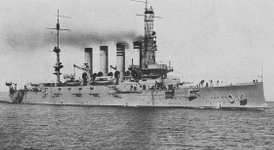

The existing hangar, built in 1929, was retained and became the transportation office and motor pool. Included were 22 large warehouses, each 150 feet wide and 450 feet long. The plans called for 36 permanent buildings that, due to wartime lumber shortages, were constructed of masonry block. The designer for the project was prominent Seattle architect Paul Thiry (1904-1993). This type of arrangement was known as a GOCO, for "Government Owned, Contractor Operated." The navy built it, but the civilian construction consortium Pacific Naval Air Bases (PNAB) operated it. The depot property was obtained in July 1944 and by late fall was in operation. The federal government obtained the Mueller-Harkins Airport, just over 300 acres, for an advance depot to supply airfields in the Pacific. Today this area is within the City of Lakewood. The Naval Advance Base Depot was located in Tacoma’s Lakeview district.

Today Naval Magazine Indian Island provides ordnance support to the Pacific Fleet and joint services and is a secure and highly restricted military installation.

The facility stored and delivered ammunition to ships during World War II. Construction started on November 16, 1940, and was completed in eight months. In 1940, the navy acquired 2,716-acre Indian Island in Jefferson County for use as an ammunition depot. The Spokane Naval Supply Depot survives in adaptive reuse as an industrial park. The Indian Island ammunition depot remains in active use and the Bangor ammunition depot now serves as a submarine base. The military facilities at two of the depots, the Bremerton ammunition depot and the Seattle depot at Pier 91, have almost completely disappeared. Some depots were still in use during the Vietnam War. The navy sought effective plans for depots that could be quickly built, and selected prominent Washington architects to design them. The total covered storage space was about eight million square feet. Large naval-supply depots were built at Seattle, Tacoma, and Spokane. Warships returning to the Puget Sound Navy Yard for repairs could be rearmed with ammunition at depots in Bremerton, Indian Island, and Bangor. Ports in Washington state had years of experience in moving material and could be quickly pressed into service to supply the war in the Pacific. Most of the depots closed following the war, but several remain in active military use, and the Spokane depot survives as an industrial park. Naval ammunition depots were built at Bremerton, Bangor, and Indian Island to support the fleet and warships that came to the Puget Sound Navy Yard. Enormous depots were built at Pier 91 in Seattle and near Spokane, used to supply needed war materiel to Alaska and the Pacific. Washington's excellent ports and fine railroad network made the state a good choice for siting large naval supply depots during World War II.


 0 kommentar(er)
0 kommentar(er)
